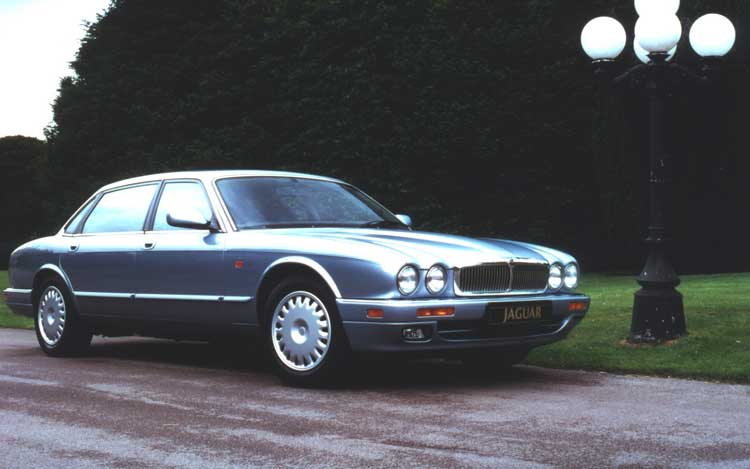Jaguar XJ6
Quieter than a Rolls, more agile than an E-type, Martin Buckley hails a classic that is still without equal

The 1968 Jaguar XJ6 brought together in one design standards of ride comfort, silence, handling and road holding - qualities previously thought incompatible in a luxury car - that eclipsed the best in the world. This new British world beater would out-corner Jaguar's own E-Type but had a ride that was softer and quieter than a Rolls Royce. This was the world's most beautiful saloon too, with a shape that proved amazingly enduring: the last of the first generation XJ saloons were built in 1992.
The shape was Jaguar founder Sir William Lyons's crowning achievement and was so obviously a Jaguar that on the first cars no badges with the marque name were deemed necessary. Encounter an XJ today and marvel at how low slung and slender it is, like a kind of four-door sports car compared with the bloated luxo-barge prestige saloons of 2005. Jaguar has never come near recapturing its elegance. And like all Jaguars before it the XJ was a bargain, often under-cutting the nearest Mercedes by more than half.
The 1968-73 Series ones are the most "classic" with their big square radiator grilles and handsome interiors that link the cars more closely with the earlier generation of Jag four-doors; lots of dials and rocker switches and that beautiful thin-rimmed steering wheel. The S1 range embraced poverty 2.8s and beefy 4.2s (powered by the charismatic twin-cam XK six cylinder engine), a rare and very thirsty V12 plus Daimler variations, most memorably the posh Vanden Plas trimmed variants.
The 1973-79 Series II cars were produced amid the worst of the strife of the British Leyland era but gave rise to one of the most interesting XJ models, the two-door coupé.
Elegantly pillarless the XJC was seen by Browns Lane as Britain's first line of defence against the trendy Seventies coupés of BMW and Mercedes. The vinyl roof was a device to disguise the added thickness of the rear pillars, and it also meant there was no need to clean up the welding on the roof.
It is said to have been Williams Lyons's favourite car but it was also one of his shortest-lived. Born in 1973 as the star of the new Series II XJ range, production didn't really get into its stride until 1975 as the engineers struggled with the window-sealing problems. It was eased out in 1977 to give more capacity to build saloons and its much uglier replacement, the XJS.
The XJC was being hailed as a future classic almost before it went out of production but somehow it never happened. However, a fine coupé will always draw a small premium over an equally top-notch saloon. The problem might be finding the right car. Jaguar only built 2,262 V12 Coupés (including 407 Daimlers).
The series II XJs weren't a high point for Jaguar interior design - the brittle detailing looks too much like down-market Leyland cars in some places with cheap column stalks and unsightly plastic bezels on the instruments among many other jarring details.
Although six-cylinder XJ models had all the urge most people would ever need, the V12, is still the one to go for if you can find one without irritating electrical problems associated with its primitive fuel injection. They don't use that much more fuel than the XJ6 and have a silken, velvety energy that is much more in tune with the spirit of the XJ. The car feels as if it is powered by some kind of remote electric turbine rather than mere internal combustion.
In the Seventies the only other firms making V12 engines were Ferrari and Lamborghini. The Jaguar interpretation was a different kind of V12, created for remote, unobtrusive power and a flat torque-curve that makes it a perfect match for what was a state-of-the-art General Motors automatic transmission. Ideologically this engine - first seen in the E-Type in 1971 - had more in common with the whispering flat-head V12s of pre-war Lincolns and Cadillacs but it still powered the XJ to a supercar-like 150mph.
Drive a good XJ6 or XJ12 and you'll marvel at the ride. So supple, so resilient, each wheel movement damped and isolated from the interior. They still handle with a light touch but you might find the power steering too light if you are accustomed to modern machinery. The XJ wasn't perfect. Quality, never top-drawer stuff, was looking very shaky on the first of the face-lifted Series III. Buyers lost confidence and sales began to nosedive.
Enter, in March 1980, John Egan, given the job of making or breaking Leyland's problem child. Flagging sales were arrested, Jaguar went public with spectacular success in 1984 and in North America the now 15-year-old XJ6 was breaking all sales records and creating the profits that allowed Jaguar to build its successor, that pub landlord special, the XJ40.
The Series III XJs are perhaps the easiest to live with but least charismatic of the type and, being younger, more plentiful. Pininfarina's restyle of the roofline skilfully updated the car without loosing its essential gracefulness.
Rivals marques may have caught up and even exceeded some of its standards in the mid to late Eighties, but at least the XJ, for many the last real Jaguar, went out on the highest of high notes.
Join our commenting forum
Join thought-provoking conversations, follow other Independent readers and see their replies
Comments